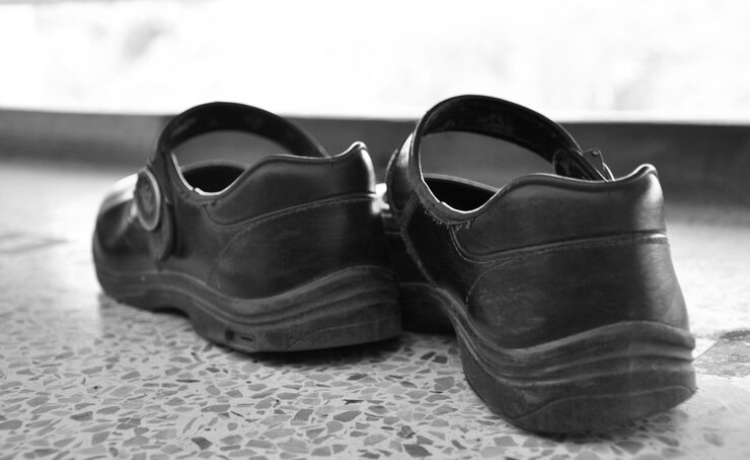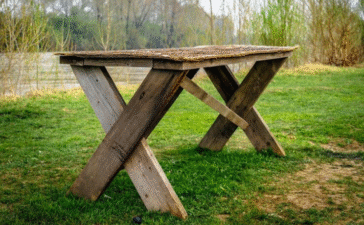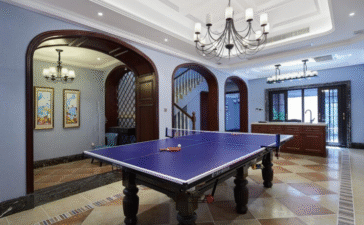Working in a kitchen means navigating a minefield of potential hazards every single day. From sizzling grease splatters to puddles of water near dishwashing stations, kitchen environments present unique challenges that demand specialized footwear. Non Slip kitchen shoes have evolved from a simple safety recommendation to an absolute necessity for anyone serious about their wellbeing and career longevity in the food service industry.
The statistics paint a sobering picture of kitchen safety. According to the Bureau of Labor Statistics, slips, trips, and falls account for approximately 25% of all workplace injuries in the food service sector. More concerning is that these incidents result in an average of 11 days away from work, significantly impacting both workers and employers. The financial burden extends beyond immediate medical costs, encompassing lost productivity, workers’ compensation claims, and potential legal liabilities.
Kitchen professionals who invest in proper Non Slip footwear experience dramatically reduced injury rates while enjoying enhanced comfort during those grueling 12-hour shifts. This comprehensive guide examines everything you need to know about selecting, wearing, and maintaining kitchen slip-resistant footwear that will protect your feet and support your career in the culinary arts.
What Are Non Slip Kitchen Shoes?
Non Slip kitchen shoes represent a specialized category of footwear engineered specifically for the demanding conditions found in commercial kitchens. These shoes incorporate advanced materials and design principles that create superior traction on surfaces commonly found in food service environments.
The fundamental difference between regular shoes and kitchen slip-resistant footwear lies in the sole construction and tread pattern. Non Slip soles typically feature deep channels and multi-directional grooves that channel liquids away from the contact surface while maintaining grip. The rubber compounds used in these soles undergo special formulation to remain flexible and grippy even when exposed to oils, grease, and varying temperatures.
Modern Non Slip kitchen shoes utilize either natural rubber or advanced polyurethane compounds in their outsole construction. Natural rubber provides excellent grip on wet surfaces but may degrade more quickly when exposed to oils and chemicals. Polyurethane outsoles offer superior chemical resistance and durability while maintaining excellent slip resistance across various surface conditions.
The tread patterns themselves undergo rigorous testing using industry-standard slip resistance protocols. The most effective designs feature a combination of larger lugs for initial contact and smaller channels for liquid dispersal, creating a multi-layered approach to traction that performs consistently across different floor conditions.
Why Non Slip Shoes Are a Must-Have for Kitchen Workers
Kitchen environments present a perfect storm of slip hazards that make specialized footwear absolutely essential for worker safety. The Occupational Safety and Health Administration reports that restaurants experience slip and fall accidents at rates nearly three times higher than other industries, with the majority occurring during peak service hours when kitchen floors are most likely to be contaminated with liquids and debris.
The financial impact of these accidents extends far beyond immediate medical expenses. According to recent data from the National Safety Council, the average cost of a workplace slip and fall injury exceeds $45,000 when factoring in direct medical costs, lost productivity, and administrative expenses. For restaurant operators already working with thin profit margins, a single serious accident can have devastating financial consequences.
Non Slip shoes for kitchen staff serve as the first line of defense against these preventable accidents. Proper footwear can reduce slip and fall incidents by up to 67% according to studies conducted by the National Institute for Occupational Safety and Health. This dramatic reduction in accident rates translates directly into lower insurance premiums, reduced workers’ compensation claims, and improved overall workplace morale.
Beyond safety considerations, the best shoes for standing all day in kitchen environments provide crucial support for workers who spend entire shifts on their feet. The combination of hard surfaces, extended standing periods, and constant movement places enormous stress on feet, ankles, and lower legs. Quality Non Slip kitchen shoes incorporate advanced cushioning systems, arch support, and shock absorption technologies that help prevent fatigue-related injuries and long-term musculoskeletal problems.
Top Features to Look for in Non Slip Kitchen Shoes
Understanding the key features that distinguish superior Non Slip kitchen shoes helps ensure you make an investment that protects both your safety and long-term foot health. The most critical feature remains the slip-resistant outsole, but several other characteristics contribute significantly to overall performance and comfort.
Slip-Resistant Outsoles and Tread Design
The effectiveness of Non Slip kitchen shoes for wet floors depends primarily on outsole composition and tread pattern design. Look for shoes featuring outsoles made from high-quality rubber compounds specifically formulated for oil and water resistance. The tread pattern should incorporate multiple grip elements including deep channels for liquid dispersal and varied lug sizes for maximum surface contact.
Advanced tread designs feature what manufacturers call “multi-directional” patterns that provide consistent traction regardless of your direction of movement. This becomes particularly important during busy service periods when kitchen staff must navigate quickly around obstacles while carrying heavy loads or hot items.
Comfort and Support Systems
Shoes for long hours in kitchen work must incorporate comprehensive comfort technologies that address the unique demands of extended standing and walking on hard surfaces. Premium models feature dual-density midsoles that combine firm support with soft cushioning, providing both stability and shock absorption.
Arch support represents another crucial comfort element, particularly for workers with flat feet or high arches. Look for shoes featuring built-in arch support systems or removable insoles that accommodate custom orthotics. Proper arch support helps prevent plantar fasciitis, a common condition among food service workers.
The heel area deserves special attention in kitchen footwear selection. Quality shoes incorporate gel or air cushioning systems in the heel zone to absorb impact during walking and provide additional comfort during extended standing periods.
Waterproofing and Easy Maintenance
Waterproof Non Slip shoes for kitchen environments provide essential protection against liquid penetration while simplifying daily cleaning routines. True waterproof construction prevents liquids from seeping through seams or material joints, keeping feet dry and comfortable throughout the shift.
Look for shoes constructed with sealed seams and water-resistant materials that can withstand repeated exposure to cleaning chemicals and sanitizing solutions. The upper materials should resist staining and allow for easy cleaning with standard kitchen sanitizers without degrading the shoe’s structural integrity.
Durability becomes particularly important given the harsh conditions found in commercial kitchens. Quality Non Slip shoes feature reinforced high-wear areas, chemical-resistant materials, and construction methods that maintain performance even after months of daily use in demanding environments.
Best Non Slip Kitchen Shoes for Men and Women
Selecting the best Non Slip shoes for chefs and kitchen staff requires understanding both gender-specific fit requirements and the varying demands of different kitchen roles. Professional kitchen workers benefit from shoes designed specifically for their work environment rather than general-purpose athletic or work shoes.
Top Picks for Male Kitchen Workers
Men’s Non Slip kitchen shoes typically feature wider toe boxes and more robust construction to accommodate different foot shapes and higher impact activities. Leading models incorporate advanced cushioning systems designed for heavier body weights and longer stride lengths common among male kitchen workers.
Professional chef shoes for men often include additional features like reinforced toe caps for protection against dropped items and more aggressive tread patterns for enhanced grip during quick movements. The sizing typically runs more consistently with standard athletic shoe sizing, making selection somewhat more straightforward.
Women’s Kitchen Safety Footwear
Women’s Non Slip kitchen shoes require specific design considerations including narrower heel construction, arch support systems designed for different foot mechanics, and sizing that accounts for the typical differences in foot shape between genders. Many women find that standard unisex kitchen shoes don’t provide adequate heel support or proper arch alignment.
Leading manufacturers now offer women-specific lasts and construction methods that provide superior fit and comfort for female kitchen workers. These shoes often feature additional forefoot cushioning to address the higher pressure points common with women’s foot mechanics during extended standing.
Brand Recommendations and Professional Reviews
Industry professionals consistently recommend several key brands that have demonstrated long-term reliability and performance in commercial kitchen environments. These manufacturers invest heavily in research and development specifically focused on food service applications, resulting in superior products that address the unique challenges of kitchen work.
Professional reviews from culinary magazines and safety organizations consistently highlight the importance of trying multiple brands and styles to find the best individual fit. What works perfectly for one kitchen worker may not provide adequate comfort or support for another, making personal fitting essential.
How to Choose the Right Non Slip Kitchen Shoes
Choosing Non Slip kitchen shoes for chefs vs staff footwear requires understanding both your specific work environment and individual foot characteristics. The selection process should prioritize safety performance while ensuring adequate comfort for your particular role and shift length.
Assessing Your Kitchen Environment
Fast-paced restaurant kitchens present different challenges compared to institutional food service or catering operations. Line cooks working over grills and fryers face different slip hazards than prep cooks working in refrigerated areas or dishwashers dealing with constant water exposure.
Consider the primary floor surfaces in your work area, the types of liquids and debris you encounter regularly, and the typical duration of your shifts. Kitchens with tile floors require different tread patterns than those with rubber matting, while operations using heavy amounts of oil need shoes with superior grease resistance.
Fitting Considerations and Sizing
Proper fitting remains crucial for both safety and comfort performance. Kitchen shoes should provide adequate toe room without being loose enough to cause instability. Your feet typically swell during long shifts, so consider fitting shoes later in the day when your feet are closer to their working size.
Pay particular attention to arch support alignment and heel cup fit. Shoes that don’t properly support your arch structure can lead to fatigue and injury over time, while inadequate heel support can cause instability and increased slip risk.
Budget and Value Considerations
While premium kitchen safety footwear requires a higher initial investment, the long-term value often exceeds that of cheaper alternatives. Quality shoes last longer, provide better protection, and help prevent costly workplace injuries that can impact your career and income.
Consider the cost per wear over the expected lifespan of the shoes rather than just the initial purchase price. A $150 pair of shoes that lasts 18 months provides better value than a $75 pair that requires replacement every six months, particularly when you factor in the superior comfort and protection of higher-quality options.
Frequently Asked Questions
What makes kitchen shoes different from regular athletic shoes or work boots?
Kitchen-specific footwear incorporates specialized features designed for food service environments that regular shoes lack. The outsole compounds resist degradation from oils and cleaning chemicals while maintaining superior traction on wet and greasy surfaces. Kitchen shoes also feature waterproof or water-resistant construction to prevent liquid penetration and easier sanitization. The tread patterns undergo specific testing for slip resistance on surfaces common in commercial kitchens, including wet tile, rubber matting, and areas contaminated with food debris.
How often should I replace my Non Slip kitchen shoes?
The replacement frequency depends on several factors including daily usage hours, kitchen environment conditions, and shoe quality. Most professional-grade kitchen shoes require replacement every 6-12 months with daily use. Monitor the tread depth regularly, as worn treads significantly reduce slip resistance even if the shoe appears otherwise intact. Replace shoes immediately if you notice reduced traction, sole separation, or water penetration through previously waterproof areas.
Can I use regular running shoes with good tread in the kitchen?
Regular athletic shoes lack the specialized features necessary for kitchen safety, even if they appear to have aggressive tread patterns. Athletic shoe outsoles aren’t formulated to resist oils and cleaning chemicals found in commercial kitchens, leading to rapid degradation and reduced traction. The tread patterns in running shoes optimize for forward motion on dry surfaces rather than multi-directional grip on contaminated floors. Additionally, athletic shoes typically lack waterproof construction, allowing liquid penetration that creates safety and hygiene concerns.
Are more expensive kitchen shoes always better?
Price often correlates with quality in kitchen footwear, but the most expensive option isn’t always the best choice for every individual. Higher-priced shoes typically feature superior materials, advanced comfort technologies, and more durable construction that provides better long-term value. However, proper fit and suitability for your specific work environment matter more than price alone. A moderately-priced shoe that fits correctly and meets your kitchen’s demands will outperform an expensive shoe that doesn’t fit properly or lacks features important for your work conditions.
How do I properly clean and maintain my kitchen shoes?
Daily cleaning helps maintain both hygiene and performance of Non Slip kitchen shoes. Remove loose debris and rinse with warm water after each shift, paying particular attention to the tread areas where food particles can accumulate. Use mild soap or kitchen-safe sanitizers for deeper cleaning, avoiding harsh chemicals that might degrade the outsole compounds. Allow shoes to air dry completely between shifts, and consider rotating between two pairs to ensure complete drying. Replace insoles regularly if your shoes have removable footbeds, as these areas accumulate moisture and bacteria over time.
What should I do if my kitchen shoes become slippery over time?
Reduced traction typically results from tread wear, outsole contamination, or material degradation. First, thoroughly clean the outsoles to remove any built-up grease or debris that might be reducing grip. Inspect the tread depth and pattern for excessive wear that would warrant replacement. If the shoes are relatively new but seem slippery, check whether you’re working on different surfaces or encountering different types of spills than usual. Some temporary solutions include textured insole inserts or grip-enhancing sprays, but these should never replace properly functioning Non Slip outsoles.
Do I need different shoes for different kitchen positions?
Different kitchen roles may benefit from specialized footwear features. Line cooks working near grills and fryers need maximum grease resistance and heat protection, while prep cooks might prioritize comfort for extended standing periods. Dishwashers require superior waterproofing and chemical resistance, while servers moving between kitchen and dining areas might prefer shoes with more polished appearances. However, any kitchen shoe should meet basic slip resistance and safety standards regardless of the specific role.
Can I use orthotic inserts with kitchen shoes?
Many Non Slip kitchen shoes accommodate custom orthotic inserts, though this depends on the specific shoe design and your orthotic requirements. Look for shoes with removable insoles and adequate internal volume to accommodate custom orthotics without creating pressure points. Ensure that adding orthotics doesn’t compromise the fit so much that your foot moves around inside the shoe, as this can actually increase slip and injury risk. Some kitchen shoe manufacturers offer models specifically designed for orthotic use with deeper heel cups and more spacious forefoot areas.
You would also like: “how to get rid of gnats in kitchen“
Making the Right Choice for Your Kitchen Career
Investing in proper Non Slip kitchen shoes represents one of the most important safety decisions you can make as a food service professional. The combination of injury prevention, enhanced comfort, and improved job performance makes quality kitchen footwear an essential tool rather than just another uniform requirement.
The evidence overwhelmingly supports the value of specialized kitchen footwear in preventing workplace injuries while enhancing daily comfort during demanding shifts. Professional kitchen workers who prioritize proper footwear experience fewer injuries, less fatigue, and often enjoy longer, more successful careers in the food service industry.
Remember that the best kitchen shoes are the ones you’ll actually wear consistently, so prioritize proper fit and comfort alongside safety features. Take time to research options, read professional reviews, and if possible, try different brands and styles to find the perfect match for your individual needs and work environment.
Your feet carry you through every aspect of your culinary career. Protecting them with quality Non Slip kitchen shoes isn’t just about meeting safety requirements it’s about investing in your professional future and ensuring you can continue pursuing your passion for food service for years to come.












